第161号 美術の授業が面白い
【美術の授業が面白い】
「美術の授業が面白い」とは、校長室に掃除に来てくれている1年生の言葉です。どうして面白いのかを尋ねると、今はデッサンをやっていて基本の描き方を教えてもらえるからです、という答えが返ってきました。
それでは、と思って、美術が好きだというその生徒に、「オンライン会議中」というデザインを描いてくれないかなぁと相談しました。コロナ下で対面の会議が大幅に減った一方、校長室にいながらのオンライン会議が非常に増えてきました。普段は開けっ放しの校長室ですが、入り口に掲示しておくと校長の動向がわかるからです。
しばらくして、持ってきてくれました。それも2枚。ラミネートで覆って早速使っています。
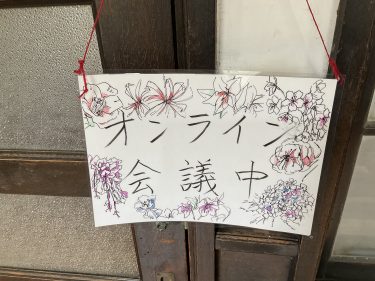
その後、どんな授業をやっているんだろう、と興味をもって美術の授業を覗いてびっくり! デッサンというか、直方体や円柱を鉛筆でスケッチブックに描いている、その濃淡を表した作品が、どれもこれも素晴らしい。
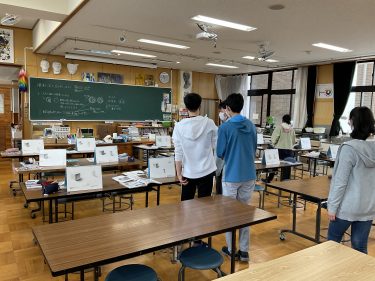
これまで4時間くらいかけて描いたものを机の上に立てて、それぞれの作品の良さを皆で見合っていました。「陰影法」といい、大きく面で明暗をとらえながら立体が見えるように明るいところと暗いところをとらえて濃淡を表現するんだそうです。
今後は、外で立体としての校舎を描いていくようです。担当している中嶌翼先生が次のようなコメントを寄せてくれました。
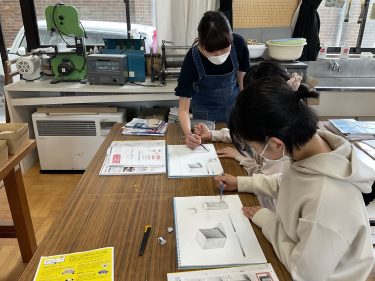
「私の苦手教科は体育でした。お手本をよく見ているはずなのに、いま一つ掴めず、皆と逆の動きをすることもしばしば。大人になった今でも伝達センスは悪いままですが、体の動かし方を少しずつ教えてもらい、スポーツジムが楽しみになっています。
絵も似ているかもしれません。「センス」で片付けてしまえば、味気ないですよね。皆が美術系大学に行くわけではありません。絵を描けるかどうかは「観察できる」かどうか。良い作品というのは、一見感覚的に見えて、ちゃんと論理と本質をとらえています。じっくりと観察のポイントを掴み、実践し、ゆっくりと咀嚼できれば、誰でも描けるようになります。 ”The art and science” 大人になり始めた年代だからこそ、切り込んでいける向き合い方だと思います。
見えるようになれば描けるようになる。描けるようになれば工夫したくなる。工夫できると自他の魅力が分かる。毎回少しずつの「分かった」を重ね、「好き」を増やして「夢中」の原動力にする。「基礎力があれば自ら挑戦したくなるはず」と信じ、授業をしています。
今描いているのは、立方体と円柱です。これらを「なんの変哲もなく存在させる」ために学んだ多くの発見が、次の風景画で私の予想を良い意味で裏切った表現に化けてくれるのではないか、と思っています。次の風景画レポートまで、乞うご期待です。」
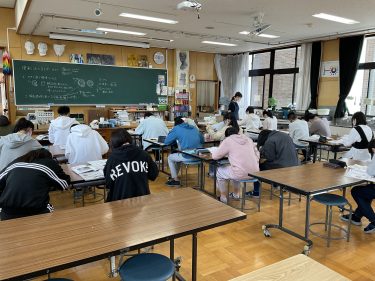
美術のセンスがあまりない自分が言うのも説得力がありませんが、本校の生徒にとって、感性を磨いたり何かに集中して取り組む「美術」という授業の大切さを再確認したところです。
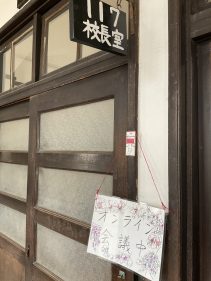
(English version below)
“Art class is interesting for me,” said one of the first-year students who regularly came to clean my room after school. Asked why it was interesting, she said it was because the teacher taught us basic skills of how to draw a picture.
I asked her to make a signboard telling the teachers and students that I am attending a meeting online in my room, so they know my whereabouts. Actually online meetings of mine are getting larger in number these days.
A week or two later, she came to me with two design pieces with the message “Online Meeting In Progress” on them. I laminated them and started to put them on the doors to my room during the meeting.
The other day, I went to watch the fine art class, and was shocked to see the beautiful drawing of each student there. According to the teacher, iIt took them about four lesson hours to draw a cuboid and a column with a pencil.
It is called a shadow method (shaded drawing) where you distinguish between light and dark of things, and draw a picture in shading.
In the lesson I watched, the students put their pieces of work upright on the desk, so that everyone could see the work of others, and then they again worked on their own. They are going to work outdoors to draw school buildings with the basic skills they have learned.
Ms. Nakajima, who teaches fine art class, says as follows.
“In my own school days, I was poor at physics; I watched the models carefully and tried to mimic them but I failed to get them right, sometimes doing the complete opposite. I am still awkward with physical movement, but I enjoy exercising in the gym with the help of the instructors who teach me the movement step by step.
“Art is parallel to sports, I think. It’s not important whether you are talented in art or not. Not all the students go on to art college. The point is to “observe.” A good piece of art is produced based on a proper theory and principle, even though it looks intuitively drawn. You can draw a picture if you observe things carefully, understand the drawing theory, and put it into practice. This is “the art and science,” which high school students on their very way to adulthood can apply to draw art.
“The more clearly you see an object, the better you draw; the better you draw, the more skillful you want to be; the more skillful you grow, the better you understand the work of others. I would like to have the students pile up a small step forward, and get them to be interested in art, eventually devoting themselves to it. I always conduct my lesson in the belief that with basic skills of art my students will want to try for themselves.
“They are now drawing a cuboid and a column in the class. What they have learned by drawing them well in class will certainly help them to paint outdoors unexpectedly wonderful pictures of the landscape. See you on the next report!”
I recognized that art class is important for our students in the sense that they can cultivate their sensitivity by concentrating on doing something, although the statement from an untalented person like me may not be very convincing.


